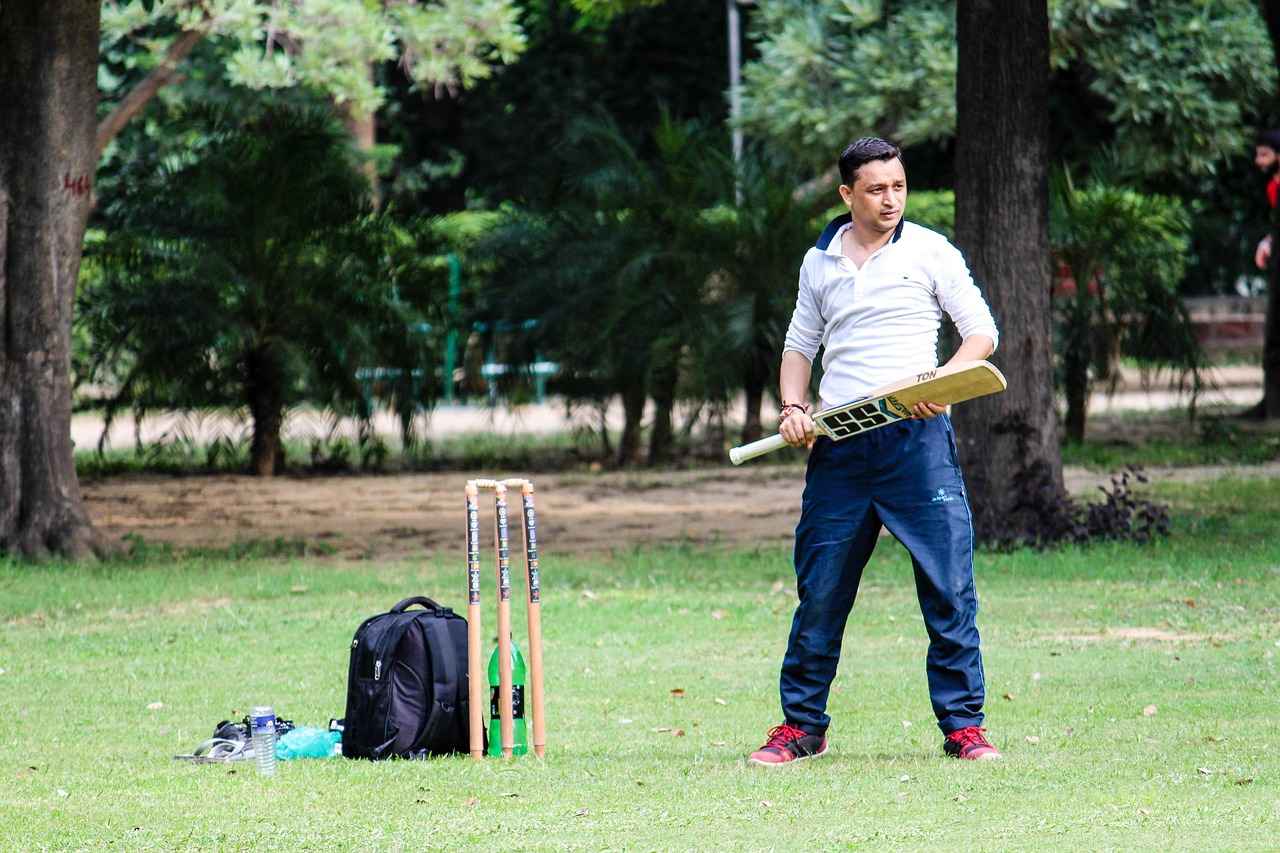This article delves into the profound passion for cricket in West Bengal, highlighting its cultural significance, historical context, and the impact it has on the lives of its people.
The Historical Context of Cricket in West Bengal
Cricket’s roots in West Bengal can be traced back to the British colonial era. The sport was introduced by the British, and it quickly gained traction among the local populace. Over the years, cricket evolved from being a pastime of the elite to a beloved sport embraced by all strata of society. This transformation laid the groundwork for cricket’s status as a cultural phenomenon in the region.
Cricket as a Cultural Phenomenon
In West Bengal, cricket transcends mere sport; it embodies a cultural identity that unites people across different backgrounds and ages. It fosters a sense of community, with matches often serving as social gatherings where families and friends come together to cheer for their teams. The sport has become interwoven with the social fabric of the state, reflecting its values and aspirations.
The Role of Local Clubs and Tournaments
Local clubs and tournaments are essential for nurturing talent and fostering community spirit. These grassroots competitions not only serve as a platform for aspiring cricketers but also bring neighborhoods together, creating a vibrant cricketing culture. Many renowned players have emerged from these local circuits, highlighting their importance in the cricketing landscape of West Bengal.
Grassroots Development Initiatives
Efforts to develop cricket at the grassroots level are crucial. Initiatives aimed at providing young players with access to training, coaching, and facilities are vital for the sport’s future. These programs not only enhance skill development but also instill values of teamwork and discipline among young athletes.
Community Engagement Through Cricket
Cricket fosters camaraderie and social interaction, creating a vibrant atmosphere where people come together to support their local teams. Such engagement strengthens community bonds and provides a sense of belonging, reinforcing cricket’s status as a unifying force in West Bengal.
Influence of Iconic Players from West Bengal
Iconic players like Sourav Ganguly have left an indelible mark on the sport. Their achievements inspire countless aspiring cricketers, motivating them to pursue their dreams. These players serve as role models, showcasing the potential for success that cricket offers.
Cricket and Its Economic Impact
The cricketing culture in West Bengal significantly contributes to the local economy. Events, merchandise sales, and tourism related to cricket generate substantial revenue, benefiting local businesses and communities.
Employment Opportunities in the Cricketing Sector
The cricketing sector creates numerous employment opportunities, ranging from coaching to sports management. This not only enhances the livelihoods of many individuals but also contributes to the overall development of the sports industry in the region.
Investment in Infrastructure and Facilities
Investment in cricket infrastructure is crucial for the sport’s continued growth. Quality training facilities and grounds are essential for developing players and hosting competitive matches, ensuring that West Bengal remains a hub for cricketing talent.
The Role of Media in Promoting Cricket
Media plays a pivotal role in promoting cricket in West Bengal. Extensive coverage of matches and player achievements fuels public interest and engagement, making cricket a focal point of local culture.
Television and Social Media Influence
Television broadcasts and social media platforms have transformed fan engagement with cricket. Real-time interactions and extensive reach have made it easier for fans to connect with the sport and its players.
The Impact of Cricket on Youth Culture
Cricket significantly influences youth culture in West Bengal, shaping aspirations and fostering a sense of identity among young people. Many youngsters dream of becoming professional players, inspired by the success stories of local heroes.
Conclusion: The Future of Cricket in West Bengal
As cricket continues to evolve in West Bengal, its significance as a cultural cornerstone remains steadfast. With ongoing grassroots development and community engagement, the future of cricket in the region looks bright, promising continued passion and enthusiasm among its devoted followers.

The Historical Context of Cricket in West Bengal
Cricket in West Bengal boasts a fascinating and complex history that dates back to the British colonial era. This period marked the inception of the sport in the region, as British officials and soldiers introduced cricket as a pastime. Over time, it transformed into a beloved sport among the local populace, laying the groundwork for its enduring popularity.
The establishment of cricket clubs in the late 19th and early 20th centuries played a pivotal role in fostering local talent. Notable clubs, such as the Calcutta Cricket and Football Club, became centers for cricketing activities, attracting players from various backgrounds. These clubs not only provided a platform for competitive play but also served as social hubs where communities could gather and share their passion for the game.
As the sport gained traction, it became intertwined with the cultural identity of West Bengal. The fervor for cricket was evident during major tournaments, where local teams competed fiercely for glory. The Calcutta Test, held at Eden Gardens, is a prime example of how cricket captured the hearts of millions, drawing large crowds and creating an electric atmosphere.
In addition to fostering local talent, cricket also served as a unifying force in a region marked by diversity. It transcended social and economic barriers, allowing people from all walks of life to come together and celebrate their love for the sport. The impact of cricket on West Bengal’s cultural fabric cannot be overstated; it has become a symbol of pride and a source of joy for countless individuals.
As we reflect on the historical context of cricket in West Bengal, it is clear that this sport has evolved from a colonial pastime to a cherished cultural phenomenon. The legacy of cricket continues to thrive, shaping the aspirations of future generations and solidifying its place in the heart of the region.

Cricket as a Cultural Phenomenon
In West Bengal, cricket is not just a game; it is a deeply ingrained cultural phenomenon that resonates with the hearts of millions. This passion for cricket creates a unique bond among individuals, transcending barriers of age, class, and background. From bustling urban centers to tranquil rural areas, the sport serves as a unifying force, fostering a sense of community and belonging.
The celebration of cricket in West Bengal can be traced back to its colonial past, where the sport was introduced by the British. Over the decades, it has evolved into a vibrant part of the local culture. Families gather around television sets during major matches, and streets come alive with cheers and celebrations, reflecting the collective spirit of the people. This shared enthusiasm is evident during local tournaments, where teams represent neighborhoods, igniting fierce rivalries and camaraderie.
Local cricket clubs play a vital role in nurturing talent and providing a platform for young cricketers to showcase their skills. These clubs are not merely sporting institutions; they are community hubs where friendships are forged, and life lessons are learned. The excitement surrounding local tournaments fosters a sense of pride and identity, as communities rally behind their teams.
Furthermore, cricket in West Bengal has become a cultural touchstone. It influences art, music, and even literature, with numerous songs and poems celebrating the sport and its heroes. The legendary Sourav Ganguly, among other iconic players, has become a household name, inspiring countless young aspirants to take up the sport. His journey from a local talent to an international star encapsulates the dreams of many.
In conclusion, cricket in West Bengal is more than just a sport; it embodies the essence of the region’s cultural identity. It unites people, fosters community spirit, and continues to inspire future generations, ensuring that the love for the game remains as vibrant as ever.
The Role of Local Clubs and Tournaments
Local clubs and tournaments are the backbone of cricket in West Bengal, serving not only as platforms for skill development but also as vibrant community hubs. These grassroots organizations play a crucial role in identifying and nurturing young talent, often acting as the first step for aspiring cricketers aiming to make their mark in the sport.
In West Bengal, the love for cricket is palpable, and local clubs foster this passion by providing a structured environment where players can hone their skills. Coaching clinics, practice matches, and friendly tournaments are regularly organized, allowing young players to gain valuable experience. These events often attract scouts and coaches from higher levels, creating pathways for talented individuals to progress to professional cricket.
Moreover, local tournaments are a spectacle that brings communities together. Families and friends gather to support their teams, creating an atmosphere filled with excitement and camaraderie. The sense of belonging that emerges from these events is profound; they strengthen community ties and promote social interaction. Parents, children, and local businesses often come together, demonstrating how cricket can unite people from all walks of life.
Furthermore, these clubs are instrumental in promoting inclusivity within the sport. Many local organizations actively encourage participation from underprivileged and marginalized groups, ensuring that cricket remains accessible to all. Initiatives aimed at supporting girls’ cricket have also gained momentum, empowering young women to take up the sport and challenge societal norms.
In conclusion, local clubs and tournaments are not just about the game; they are about building a community. They cultivate talent, foster friendships, and promote a shared passion for cricket that resonates deeply within the hearts of West Bengal’s residents. As these grassroots initiatives continue to thrive, they will undoubtedly remain a vital part of the region’s cricketing landscape.
Grassroots Development Initiatives
play a pivotal role in shaping the future of cricket in West Bengal. These programs are designed to identify and nurture young talent, providing them with the essential resources, training, and mentorship needed to excel in the sport. Through these initiatives, aspiring cricketers from diverse backgrounds are given a platform to showcase their skills and passion for the game.
The significance of grassroots initiatives cannot be overstated. They serve as the foundation for the cricketing ecosystem in the region, ensuring that talent is not only recognized but also cultivated. Many local clubs and academies have emerged, offering structured training programs that focus on skill development, fitness, and tactical awareness. This structured approach helps young athletes understand the nuances of the game and prepares them for higher levels of competition.
- Access to Facilities: Grassroots programs often provide access to quality training facilities, which are crucial for skill enhancement.
- Coaching Expertise: Young players benefit from experienced coaches who impart knowledge and foster a love for the game.
- Community Support: These initiatives engage local communities, encouraging support for young players and creating a sense of belonging.
Moreover, grassroots initiatives are instrumental in promoting inclusivity in cricket. They ensure that children from all walks of life, regardless of their socio-economic background, have the opportunity to participate in the sport. This inclusivity not only broadens the talent pool but also enriches the cricketing culture in West Bengal.
In conclusion, grassroots development initiatives are essential for nurturing cricket talent in West Bengal. By providing young players with the necessary resources and training, these programs not only enhance individual skills but also contribute to the overall growth and popularity of cricket in the region. The future of cricket in West Bengal looks promising, thanks to these foundational efforts.
Community Engagement Through Cricket
is a vital aspect of life in West Bengal, where the sport serves as a powerful unifying force. This engagement not only fosters camaraderie among players and fans but also enhances social interaction within various communities. The cricket field becomes a melting pot of diverse backgrounds, where individuals come together to celebrate their shared love for the game.
In many neighborhoods, local cricket clubs act as the heartbeat of the community. These clubs organize matches and tournaments that draw spectators from all walks of life, creating a vibrant atmosphere filled with excitement and enthusiasm. The sense of belonging that arises from supporting local teams is palpable, as families and friends gather to cheer for their favorites. This collective experience strengthens bonds and fosters a spirit of togetherness.
| Benefits of Community Engagement Through Cricket |
|---|
| 1. Strengthens Relationships: Cricket brings people closer, encouraging friendships and connections. |
| 2. Promotes Inclusivity: The sport transcends age, gender, and social status, allowing everyone to participate. |
| 3. Enhances Local Identity: Supporting local teams fosters pride in community identity and heritage. |
| 4. Encourages Youth Participation: Engaging young people in cricket promotes physical activity and teamwork. |
Moreover, community cricket events often serve as a platform for addressing social issues, as they bring attention to local causes and encourage charitable initiatives. Fundraising matches and awareness campaigns are common, showcasing how cricket can be a tool for positive change.
In conclusion, community engagement through cricket is more than just a pastime; it is a vital element that enriches the social fabric of West Bengal. By fostering camaraderie and encouraging social interaction, cricket plays a pivotal role in creating a vibrant and cohesive community.
Influence of Iconic Players from West Bengal
Cricket in West Bengal is not just a game; it is a passion that resonates deeply within the hearts of its people. The influence of iconic players from the region, particularly Sourav Ganguly, has been monumental in shaping the cricketing landscape and inspiring countless aspiring cricketers. Ganguly, known for his aggressive captaincy and remarkable batting skills, has become a symbol of hope and ambition for many.
Since the early days of cricket in West Bengal, players like Ganguly have left an indelible mark on the sport. His journey from a young boy playing cricket in the streets of Kolkata to becoming the captain of the Indian national team is a testament to the dreams that many young cricketers harbor. His success story has motivated numerous children to pick up a bat and aspire to play at the highest level.
- Role Model: Ganguly’s leadership qualities and resilience have made him a role model. His ability to lead the team to victory against all odds has instilled a sense of confidence in aspiring players.
- Promotion of the Sport: Through his achievements, he has significantly contributed to the popularity of cricket in West Bengal, encouraging local clubs and schools to nurture young talent.
- Community Engagement: His initiatives off the field, including coaching camps and cricket academies, have provided aspiring cricketers with opportunities to develop their skills.
Moreover, the impact of Ganguly extends beyond individual players. His presence has helped foster a community spirit around cricket, uniting people from various backgrounds. The excitement surrounding local matches, fueled by the legacy of iconic players, creates an atmosphere of camaraderie and passion.
In conclusion, the influence of iconic players like Sourav Ganguly has profoundly shaped the cricketing culture in West Bengal. Their stories inspire future generations, ensuring that cricket remains a vibrant and integral part of the region’s identity.

Cricket and Its Economic Impact
The cricketing culture in West Bengal plays a crucial role in bolstering the local economy. This vibrant sport not only brings joy to millions but also serves as a significant source of revenue generation through various avenues.
| Revenue Generation Avenues | Impact on Local Economy |
|---|---|
| Cricket Events and Tournaments | Boosts local businesses, including hotels and restaurants, during match days. |
| Merchandise Sales | Increases income for local vendors and shops selling cricket-related products. |
| Tourism | Attracts cricket fans from across the country and beyond, enhancing local tourism. |
Moreover, the influx of tourism during major cricket events significantly contributes to the economy. Fans travel from various regions, filling hotels, restaurants, and local attractions, which in turn creates a multiplier effect on job creation and income generation.
In addition to direct economic benefits, cricket in West Bengal fosters a sense of community and pride among its residents. Local clubs and grassroots initiatives not only nurture talent but also create employment opportunities in coaching, sports management, and event organization.
Furthermore, the investment in cricket infrastructure, such as stadiums and training facilities, enhances the region’s profile as a sporting hub, attracting further investment and development.
In conclusion, the cricketing culture in West Bengal is more than just a pastime; it is a vital component of the local economy that generates revenue, creates jobs, and fosters community spirit. As the sport continues to thrive, its economic impact is likely to grow, making it an essential aspect of the region’s identity.
Employment Opportunities in the Cricketing Sector
The cricketing sector in West Bengal is a vibrant and dynamic field that offers a plethora of employment opportunities for individuals passionate about the sport. From grassroots coaching to high-level sports management, the industry is a significant contributor to the local economy and the livelihoods of many.
Coaching Roles
- Cricket coaches play a vital role in developing young talent, offering training sessions that focus on skill enhancement and strategy.
- With various local clubs and academies, there is a constant demand for qualified coaches who can inspire and educate aspiring cricketers.
Sports Management Careers
- Sports management professionals are essential for the smooth operation of cricket clubs and organizations.
- Roles in marketing, event management, and public relations are crucial for promoting cricket events and enhancing fan engagement.
Administration and Support Roles
- Administrative positions within cricket boards and clubs are necessary for the effective management of operations.
- These roles often include finance, human resources, and logistics, ensuring that the cricketing ecosystem functions seamlessly.
Media and Broadcasting Opportunities
- The rise of digital media has created numerous opportunities in sports journalism, commentary, and content creation focused on cricket.
- Professionals in this field help to amplify the voices of players and bring the excitement of matches to a broader audience.
Conclusion
In conclusion, the cricketing sector in West Bengal is not only a source of entertainment but also a significant avenue for employment and career growth. As the sport continues to evolve, the demand for skilled professionals in various roles will only increase, offering exciting prospects for those looking to build a career in cricket.
Investment in Infrastructure and Facilities
Investment in cricket infrastructure and facilities is crucial for the sustained growth of the sport, particularly in regions where cricket holds a significant cultural and social position. Establishing high-quality training environments not only enhances player performance but also attracts young talent to the game.
When we discuss infrastructure investment, we refer to the development of cricket grounds, practice facilities, and training academies. These facilities provide players with the necessary resources to hone their skills and improve their game. Furthermore, investing in modern amenities ensures that players can train year-round, regardless of weather conditions.
In addition to physical infrastructure, coaching and mentorship programs are vital. Qualified coaches equipped with the latest training methodologies can significantly impact player development. This investment in human resources is just as essential as building new facilities. By providing access to experienced coaches, players can receive tailored training that addresses their individual needs.
| Type of Investment | Benefits |
|---|---|
| Cricket Grounds | Quality playing surfaces for matches and practice |
| Training Facilities | Access to modern equipment and technology |
| Coaching Programs | Expert guidance and skill enhancement |
Grassroots initiatives also play a significant role in fostering a love for the game. Programs aimed at schools and local communities can introduce cricket to young players who may not have had the opportunity to engage with the sport otherwise. This early exposure can cultivate a lifelong passion for cricket, ensuring a steady influx of new talent.
In summary, the importance of investing in cricket infrastructure and facilities cannot be overstated. Such investments create a robust framework for player development, enhance the quality of the sport, and ultimately contribute to the long-term sustainability and growth of cricket.

The Role of Media in Promoting Cricket
In West Bengal, the media serves as a powerful catalyst in the promotion of cricket, significantly enhancing the sport’s visibility and accessibility. The extensive coverage provided by various media outlets, including television, newspapers, and online platforms, plays an essential role in shaping public interest and engagement with cricket.
Firstly, television broadcasts allow fans to experience live matches from the comfort of their homes. Major cricket events, such as the Indian Premier League (IPL) and international matches, are widely televised, attracting millions of viewers. This not only boosts the popularity of the game but also creates a sense of unity among fans who gather to watch matches together.
Moreover, the rise of social media has revolutionized how cricket is consumed and discussed. Platforms like Twitter, Facebook, and Instagram enable real-time interaction between fans and players. These platforms allow fans to share their opinions, celebrate victories, and express their disappointment during losses, thus fostering a vibrant community around the sport.
| Media Type | Impact on Cricket |
|---|---|
| Television | Live coverage of matches, increased viewership |
| Social Media | Real-time interaction, fan engagement |
| Print Media | In-depth analysis, player interviews |
Additionally, print media continues to play a crucial role in cricket promotion. Newspapers and magazines provide in-depth analyses, player interviews, and expert opinions, enriching the fans’ knowledge and appreciation of the game. This comprehensive coverage not only informs but also inspires aspiring cricketers in West Bengal.
In conclusion, the media’s role in promoting cricket in West Bengal is indispensable. By providing extensive coverage of matches and player achievements, the media fuels public interest and engagement, ensuring that cricket remains a beloved sport in the region. As technology evolves, it is likely that the media will continue to find innovative ways to connect fans with the game, further solidifying cricket’s status as a cultural phenomenon in West Bengal.
Television and Social Media Influence
Television broadcasts and social media platforms have revolutionized the way fans interact with cricket, creating a dynamic landscape that enhances engagement and broadens the sport’s reach. This transformation has not only changed how matches are consumed but also how communities come together to celebrate their favorite teams and players.
In the past, cricket enthusiasts relied heavily on traditional media for updates, often waiting for match reports in newspapers or scheduled broadcasts on television. However, with the advent of social media, fans now enjoy unprecedented access to real-time information. Platforms like Twitter, Instagram, and Facebook allow fans to share their thoughts, reactions, and analyses instantly, fostering a vibrant online community. This immediate interaction enables fans to feel more connected to the game, as they can engage in discussions and share highlights with friends and followers.
Moreover, television broadcasts have evolved significantly, offering high-definition coverage, expert commentary, and interactive features that enhance the viewing experience. Fans can now watch matches from various angles, access player statistics, and enjoy in-depth analyses during and after games. This comprehensive coverage not only attracts more viewers but also deepens their understanding of the sport.
Additionally, the integration of social media with live broadcasts allows for interactive features such as polls, live chats, and Q&A sessions with players and commentators. These elements create a sense of participation among viewers, making them feel like active contributors to the cricketing narrative rather than passive spectators.
As a result, cricket has become more than just a sport in West Bengal; it is a shared experience that unites fans across different demographics. The fusion of television and social media has made it possible for cricket to penetrate deeper into the cultural fabric of society, inspiring not only discussions but also a collective passion for the game.
In conclusion, the influence of television and social media on cricket cannot be overstated. These platforms have transformed the fan experience, making cricket more accessible and engaging than ever before. As technology continues to advance, the relationship between cricket and its fans will only grow stronger, promising an exciting future for the sport.
The Impact of Cricket on Youth Culture
In West Bengal, cricket is not just a game; it is a cultural phenomenon that permeates every aspect of youth life. The sport serves as a powerful medium through which young people can express their aspirations and forge their identities. From the bustling streets of Kolkata to the serene villages, cricket matches are a common sight, igniting passion and camaraderie among the youth.
Cricket as a Source of Inspiration
Many young individuals in West Bengal dream of becoming professional cricketers, inspired by local legends like Sourav Ganguly. These icons not only showcase talent but also exemplify hard work and dedication, motivating the younger generation to pursue their dreams relentlessly. The stories of these players resonate deeply, encouraging youth to engage in the sport and strive for excellence.
Community and Belonging
Cricket fosters a sense of community among the youth. Local matches bring together players and spectators, creating a vibrant atmosphere of support and encouragement. This communal spirit is crucial for personal development, as it helps young people build friendships and learn valuable life skills such as teamwork and leadership.
Grassroots Development Programs
Various grassroots initiatives are in place to nurture young talent in West Bengal. These programs provide essential training, coaching, and resources, making cricket accessible to all. By investing in the youth through these programs, the region not only cultivates future stars but also instills a sense of discipline and commitment in the players.
The Role of Technology and Media
With the advent of technology, the way youth engage with cricket has transformed. Social media platforms and live broadcasts allow young fans to follow their favorite players and teams closely. This constant connection fuels their passion for the sport and encourages active participation, whether through playing or supporting their local teams.
Conclusion
The impact of cricket on youth culture in West Bengal is profound. It shapes aspirations, fosters a sense of identity, and builds community among young people. As cricket continues to thrive in the region, it promises to remain a vital part of the cultural fabric, inspiring future generations to dream big and play hard.

Conclusion: The Future of Cricket in West Bengal
Why Cricket Is a Religion in West Bengal
Cricket in West Bengal is not merely a sport; it is a deep-seated passion that transcends generations. From bustling streets to local parks, the sound of a bat striking a ball resonates with the heartbeat of the community. This article delves into the cultural significance of cricket in West Bengal, exploring its historical roots, community engagement, and the bright future that lies ahead for this beloved sport.
The Historical Context of Cricket in West Bengal
Cricket’s journey in West Bengal began during the British colonial era, where it was introduced as a recreational activity for the elite. Over time, it permeated the local culture, gaining immense popularity among the masses. The establishment of cricket clubs in the early 20th century marked a pivotal moment, as it provided a platform for aspiring players to showcase their talent.
Cricket as a Cultural Phenomenon
In West Bengal, cricket is a cultural phenomenon that unites people from diverse backgrounds. It serves as a common language, fostering a sense of community and belonging. Local matches are not just games; they are grand events where families and friends gather, creating an electrifying atmosphere filled with excitement and camaraderie.
The Role of Local Clubs and Tournaments
Local clubs and tournaments are the backbone of cricket in West Bengal. These grassroots initiatives are essential in nurturing talent and providing young players with opportunities to shine. They serve as a breeding ground for future cricket stars, where skills are honed, and friendships are forged.
Influence of Iconic Players from West Bengal
West Bengal has produced legendary cricketers, such as Sourav Ganguly, whose contributions to the sport have inspired countless young players. Their achievements resonate deeply, motivating aspiring cricketers to dream big and strive for excellence.
As cricket continues to evolve in West Bengal, its significance as a cultural cornerstone remains steadfast. With ongoing grassroots development, community engagement, and the influence of iconic players, the future of cricket in the state looks promising. The passion of its followers ensures that this beautiful game will continue to thrive, bringing joy and unity to the people of West Bengal for years to come.
Frequently Asked Questions
- Why is cricket so popular in West Bengal?
Cricket is more than just a game in West Bengal; it’s a part of the cultural fabric. The sport brings people together, fostering a sense of community and identity that transcends age and background. It’s like a festival that unites everyone, from children playing in the streets to families cheering in stadiums.
- How did cricket start in West Bengal?
The roots of cricket in West Bengal trace back to the British colonial era. The game was introduced by the British, and over the years, it evolved into a beloved pastime among locals, becoming an integral part of their lives and celebrations.
- What role do local clubs play in cricket?
Local clubs are the heartbeat of cricket in West Bengal. They nurture young talent, organize tournaments, and create a vibrant atmosphere for fans. Think of them as the training grounds for future cricket stars, where passion meets opportunity.
- How does cricket impact the local economy?
Cricket significantly boosts the local economy by generating revenue through events, merchandise sales, and tourism. It’s like a money magnet that not only entertains but also creates jobs and opportunities for many in the region.
- Who are some iconic cricketers from West Bengal?
One of the most iconic cricketers from West Bengal is Sourav Ganguly. His journey has inspired countless aspiring cricketers, and his legacy continues to influence the sport in the region.


























































